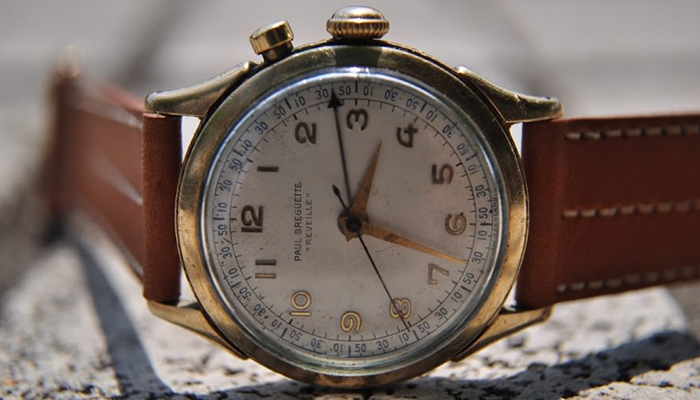8 Essential Tips on How to Care for Your Vintage Watch
While buying second-hand and vintage watches is all the rage now, it is important to understand that vintage watches are not as strong and durable as their modern-day counterparts. Just like anything that is older, a vintage watch requires some special care. Here we offer eight essential tips on how to care for your vintage watch.
Be Gentle
It is important to know that vintage watches are definitely more fragile than today’s timepieces. Years ago, brands did not have access to the high-tech materials we have today that make a case durable or to a host of other coatings and assets used in watchmaking today. Some vintage metal bracelet watches even have hollow links instead of solid links, making them much lighter in weight and a bit more susceptible to scratching and dimpling if hit hard against a surface.
Don’t Demand Perfection
Vintage timepieces may be slightly less accurate than modern watches. You should expect your vintage watch to keep time to within a minute or three per day. Remember, the watch may well be older than you; its performance won’t be perfect.

Image courtesy of Gentlemen’s Gazette
Don’t Overwind
Vintage watches produced before 1969 are all mechanical watches, since quartz watches weren’t invented until that year. If you do have a mechanical watch, no matter when it was made, it will probably need to be wound regularly. If it is a self-winding (automatic) watch, it only needs to be wound if it has stopped completely. If it is a hand-winding watch, you can wind it even if it is still running. However, in every instance, stop winding as soon as you feel resistance in the crown. Don’t try to eke a last turn out of it, since you could overwind the mainspring and cause damage.
Steer Clear of Water
Vintage watches were not created with the same attention to water resistance as watches today are. Decades ago, people took their watches off before going in the water, and this is the mindset you need to have with your vintage watch. Additionally, gaskets on a vintage watch could be dried out (and some chronograph watches may not even have gaskets), and that could cause some moisture to seep in and cause fog under the crystal. Eventually, that vapor should disappear, but the best idea is to avoid water at all costs.
Give it a Rest
If you are planning a strenuous activity, where your arm is in full motion—such as getting out on the tennis courts or the golf course—leave your vintage watch at home. Just as they were not as water resistant as today’s watches, many of yesteryear’s timepieces are delicate and cannot withstand as much shock as today’s stronger pieces.
Keep it Clean
Dust can be an enemy of the watch movement, which is especially vulnerable when the crown is open for setting. When pulling out the crown to set the watch, do it in a clean, dry place, for instance while sitting at a table. Keep the outside of the watch clean, as well, by wiping it down with a soft cloth. Don’t forget to wipe the caseback, where dirt can accumulate due to perspiration from the wrist. You don’t want the dirt to work its way into the movement.

Service It, But Be Specific About the Service
Have the vintage watch serviced every two or three years to ensure clean, new oils are added to the movement. However, it’s also important that you make whoever services the watch aware of your preferences. Sometimes, during servicing, a watch is polished to remove scratches or wear. If there is a scratch in your watch that has a particular memory tied to it, you may want to tell them not to polish the metal. Similarly, old, worn dials are sometimes replaced, which can bring down the value of the genuine watch in order to clean it up. If you don’t want the dial changed, let the watchmaker/brand know.
Box It, Don’t Use A Watch Winder
When you are not wearing your vintage watch, it is best to put it into its box or to lay it flat in a watch drawer. Even though watch winders are popularly used for today’s timepieces, watch experts argue that vintage timepieces are not built to have their mainspring fully wound at all times. That constant winding could reduce the lifetime of the lubrication in the movement.







